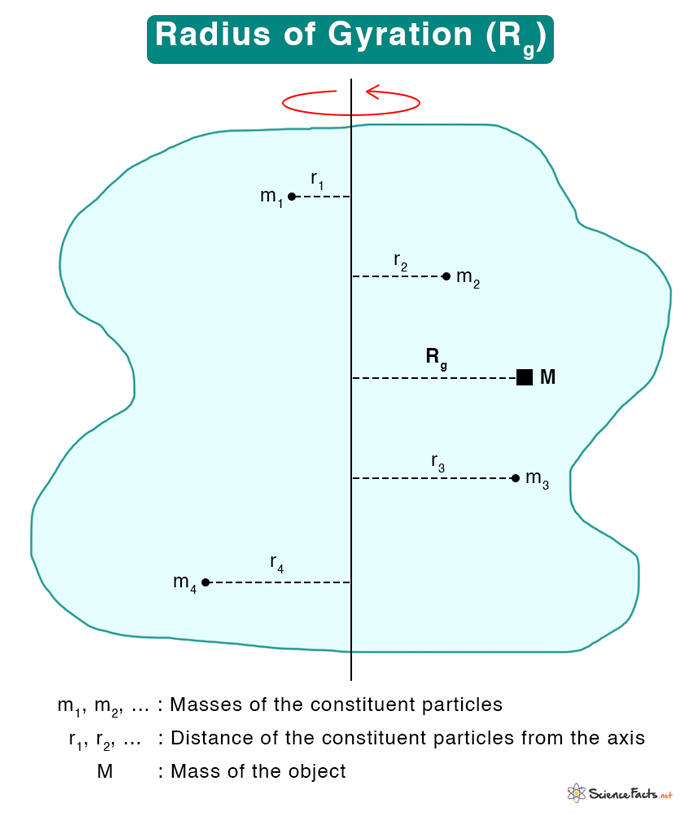Formula
Applications
Example Problems
If the particles have the same mass, m, then the above equation reduces to Suppose M is the total mass of the object. Then, M = nm. Therefore, The moment of inertia of a concentrated mass about an axis at a distance Rg from the axis is MRg2. Here, Rg is the radius of gyration. Then, Therefore, the radius of gyration of a body about a given axis is the root mean square distance of its constituent particles from the axis of rotation. Its SI unit is meter or m. In structural engineering, the radius of gyration is used to estimate the stiffness of a column. It describes the cross-sectional area distribution in a column around its centroidal axis with the body’s mass. The following formula gives the radius of gyration. I is the second moment of inertia, and A is the cross-sectional area. In classical mechanics, the moment of inertia Iaxis is a scalar quantity. The radius of gyration rg can be calculated for a mass m using the following equation: Solution. The moment of inertia of a disc of mass M rotation about an axis passing through its center is I = ½ MR2 The radius of gyration is given by Problem 2. A thin uniform rod of length 1 m and mass 1 kg is rotating about an axis passing through its center and perpendicular to its length. Calculate the rod’s radius of gyration about an axis passing through a point midway between the center and its edge perpendicular to its length. Solution The moment of inertia of the rod about its center is IC = ML2/12 From the parallel axis theorem I = IC + Mh2 => I = ML2/12 + M(L/4)2 = (7/48) ML2 = (7/48) x 1 kg x 1 m2 = 0.1458 kgˑm2 The radius of gyration is given by
